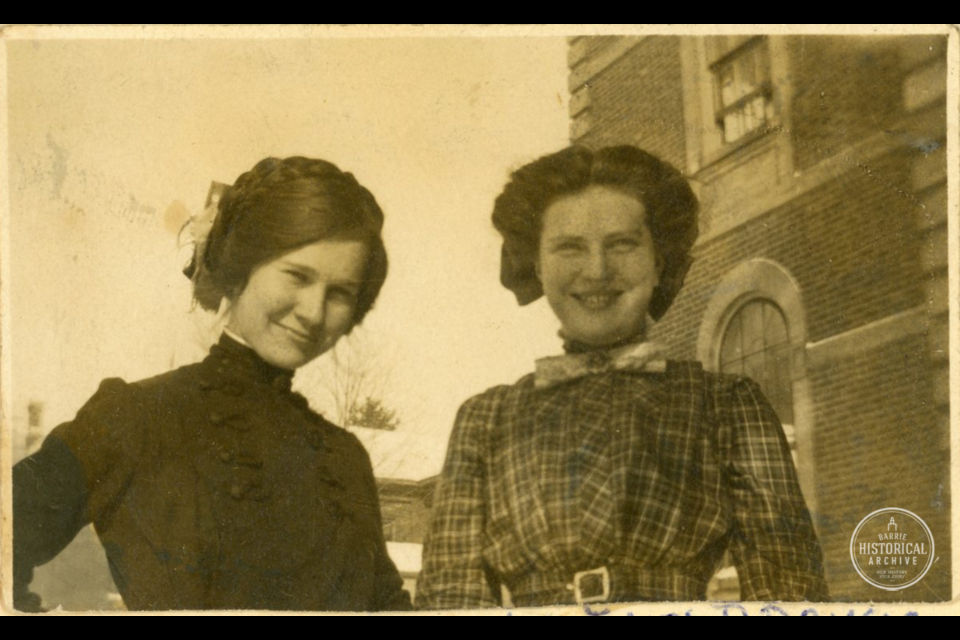It’s true. Western women have come a long way in so many ways, but one thing that remains the same is the desire to improve our personal appearance. We attempt to slow the aging process, tame our unruly hair, shape eyebrows, rosy our cheeks and banish blemishes, narrow the waist and whiten the teeth.
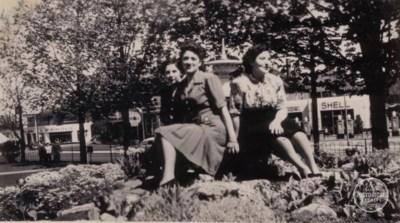 Ladies of the Dyment family, circa 1940. Photo courtesy of the Barrie Historical Archive.
Ladies of the Dyment family, circa 1940. Photo courtesy of the Barrie Historical Archive. That much has not changed, but the fashions and so-called beauty routines certainly have. The women and girls of Barrie are no more immune to the prevailing styles than their sisters in Toronto, or other larger centres.
Today, we are bombarded with images of the ideal and well-coiffed female through magazines, television and movies, billboards and the Internet, and there is no end to the sources of advice on how to sculpt, slim, restore, volumize and adorn ourselves.
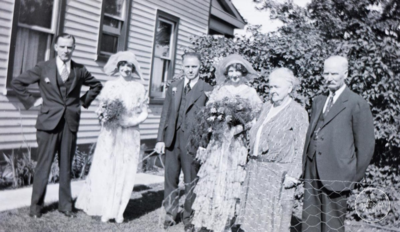 A Gill family wedding party on Innisfil St., circa 1925. Photo courtesy of the Barrie Historical Archive.
A Gill family wedding party on Innisfil St., circa 1925. Photo courtesy of the Barrie Historical Archive. Since their printing presses began humming, the wise editors of the ‘Barrie Examiner’ and the ‘Northern Advance’ always made room for a ladies’ section in their publications, and these columns were chock full of helpful little beauty and fashion tips contemporary to the era. Have a look.
How often should shampooing be done? “Once a fortnight in ordinary cases is probably enough for decency, but once a week never hurt anyone, if the shampoo is properly given.” – 1905
“There are numerous exercises that are helpful in the development of the bust. Place your finger tips on your shoulders, lift your elbows on a line with your shoulders and send them in a circle, or flap your arms as a rooster flaps his wings.” - 1936
Advertised for sale at George Vicker’s Store, home of ‘’Barrie’s Best Corsets”, a wide assortment of the latest 1907 body-shaping undergarments for women. The corsets were available in colours white or dove, styles in general or princess hip, with or without hose supporters, and in a wide range of sizes from ones described as slight figure to very stout old lady! - 1907
“Any mother can give her daughter tapering fingers if she chooses to take the trouble; if she insists that there will be a daily pinching of the fingertips, slight of course, while the flesh is soft and yielding, or the nightly wearing of steel thimbles.” - 1884
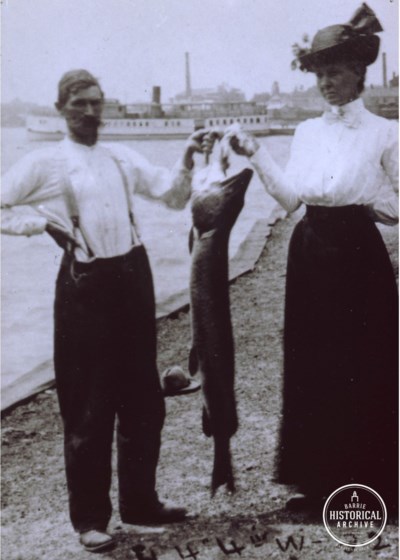 Catch of the day at the foot of Bayfield St., circa 1900. Photo courtesy of the Barrie Historical Archive.
Catch of the day at the foot of Bayfield St., circa 1900. Photo courtesy of the Barrie Historical Archive. As an article in the ‘Northern Advance’ of November 28, 1907 cheerfully pointed out, “Among the many disfigurements which a lengthy apprenticeship in housework seems to bring, nothing is worse than the gradual thinning of hair about the temples, and gray at the edge of once beautiful brown locks, the acquisition of stringy ends that fly in gray wisps that fly about the cheek and throat.”
The writer kindly offers this solution, which may get the neighbours wondering. “Put your head out the window, if you can, and with your fingers gently massage the scalp beginning at the forehead and working backward to the nape of the neck. This will stimulate the blood through the scalp, will stir up the dead cuticle and invigorate each hair with new life.”
In 1914, Rev. G.R. Turk of Collier St. Methodist (now United) Church, had some advice for the young women of Barrie about the fashions he was seeing about town. He said, in his Sunday sermon, that “the styles came from Hell via Paris and New York” and he thought that “the present feminine styles were a disgrace in this enlightened age. Many women are so hobbled they cannot walk and their appearance made them appear as deformities.”
The good minister was certainly not the first to try to tell Canadian women what they should or should not wear. In 1892, in the midst of several early feminist movements, the idea of dress reform was being floated around. After decades of tight-lacing, Victorian women began advocating for less restrictive clothing for the benefits of health and comfort.
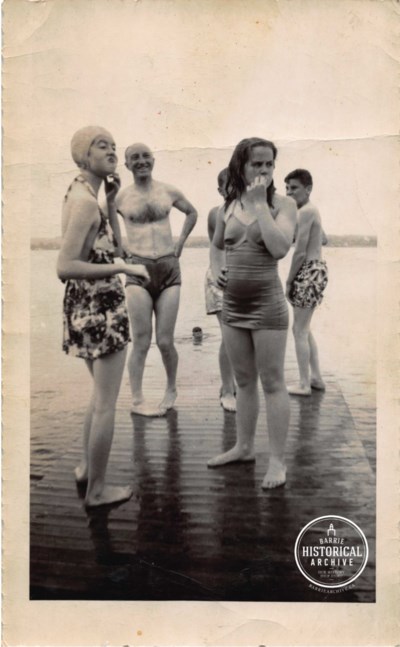 A Swim at Minet's Point, circa 1948. Photo courtesy of the Barrie Historical Archive.
A Swim at Minet's Point, circa 1948. Photo courtesy of the Barrie Historical Archive. Not everyone was on board with this. Reprinted in the ‘Northern Advance’ on January 28, 1892, from the ‘New York Sun’, was a particularly scathing opinion on the theory of practical dress.
“Every stout matron who has honoured her country and done her duty by supplying her quota of sons and daughters, and has, in consequence, no figure, but has a great preponderance in abdominal tissue, postpones the day of reform by appearing in public without her corset, to argue the cause she hinders.” Ouch!
The writer goes on to say “In the first place, the woman’s world is not ready for radical dress reform any more than it is ready for universal suffrage.”
He was right about that last bit, unfortunately. It would take a few more years before Canadian women were allowed more say in how they fit into society, and how they dressed.
